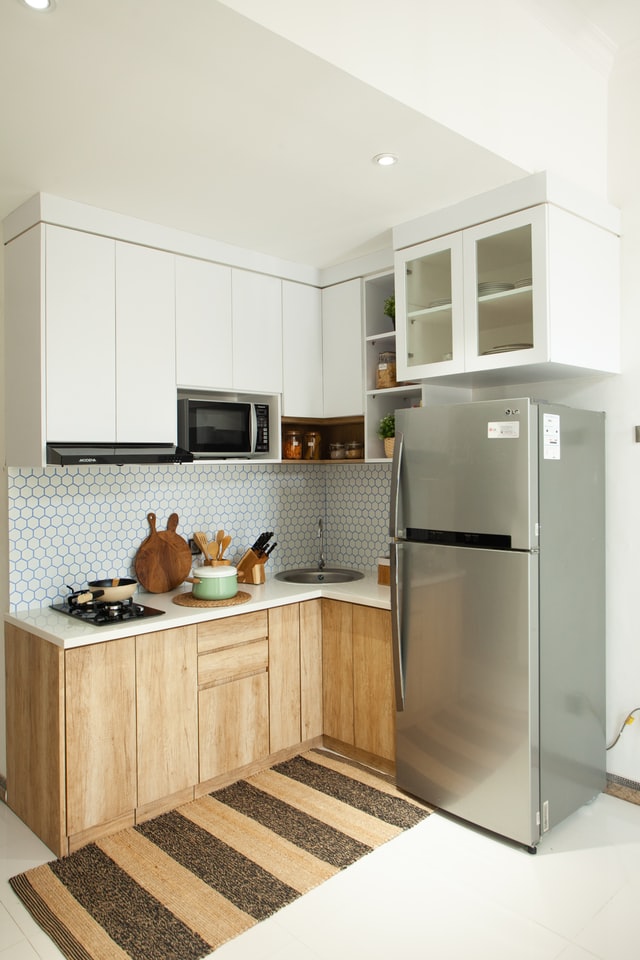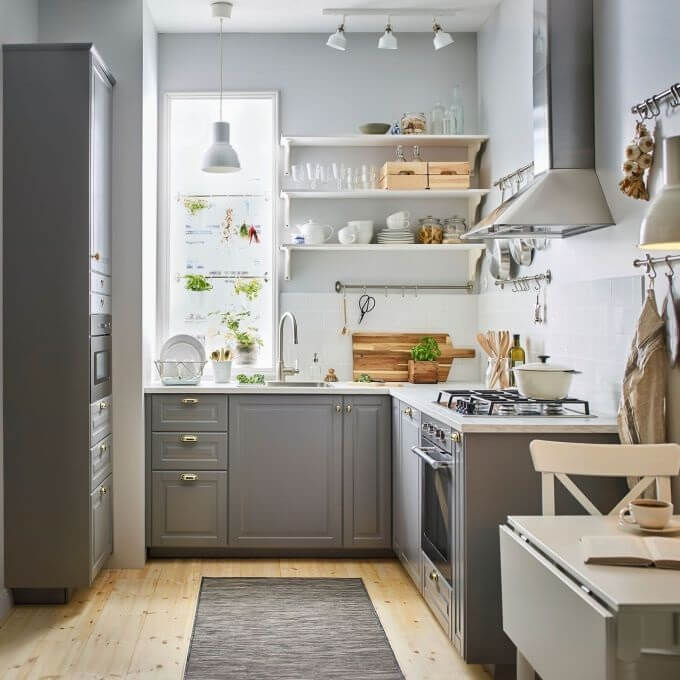First thing’s first: small kitchen layout ideas
If you’re building a new kitchen or heavily renovating an old one, you have the luxury of deciding everything about the layout. There are essentially four main layouts to consider. Different design ideas throughout this article will work better with certain layouts, so let’s familiarize ourselves with the basics:
One-wall kitchen
One-wall, straight kitchens are common in small apartments and condos. In this layout, all the appliances, cabinets, and counters are placed against a single wall (hence the name). Unless you’re very tight on space, the single-wall kitchen isn’t the best idea; the straight line doesn’t allow great workflow.

Galley kitchen
The galley kitchen is like the souped-up version of the straight kitchen; appliances, counters, and cabinets are arranged in straight lines on either side of a narrow space. “Galley” comes from the name for the long, narrow kitchens on ships, trains, and planes. Because of that origin, you can see how galley kitchens make efficient use of small spaces. They can, however, feel somewhat cramped.

L-shape kitchen
In the L-shape layout, appliances and countertops are placed in a corner, running along perpendicular walls. There may or may not be an island in the open space within the L. The L-shape kitchen provides plenty of counter and storage space while providing a feeling of openness.
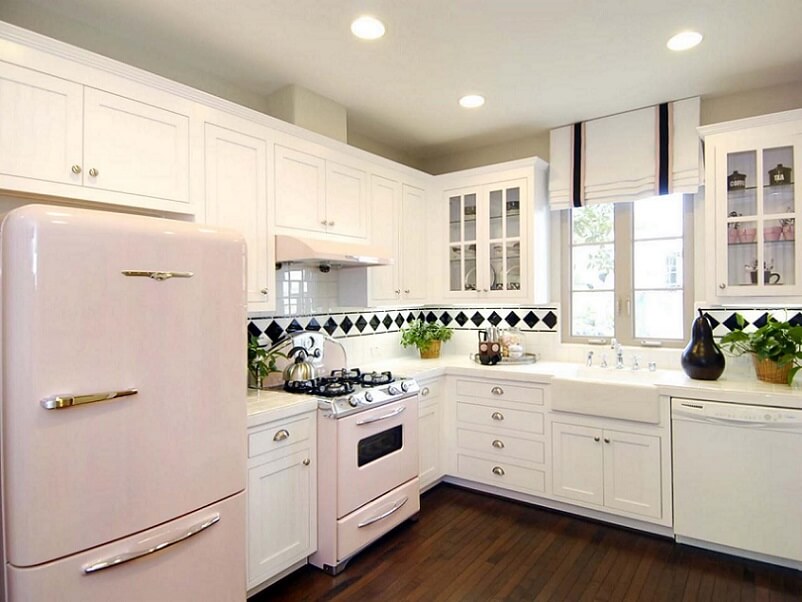
Horseshoe or G-shape kitchen
An extended version of the L-shape, this kitchen type involves counters in an arrangement that surrounds the kitchen work area on at least three sides. This layout is more common for large kitchens; a small home may not have enough room for counters on all sides. In an open-plan home, however, you might be able to fit a small kitchen of this style.
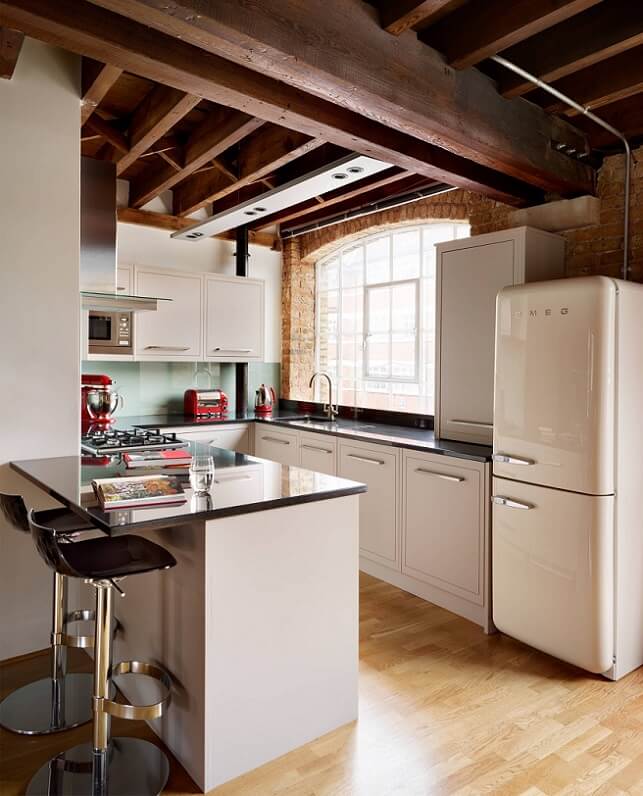
These are only four basic kitchen layout ideas. Use them as starting points to design the right layout for your home. As you work on your layout, remember the kitchen work triangle rule: Arrange the refrigerator, the stove, and the sink so that they form a triangle. This layout ensures efficient workflow in your kitchen.
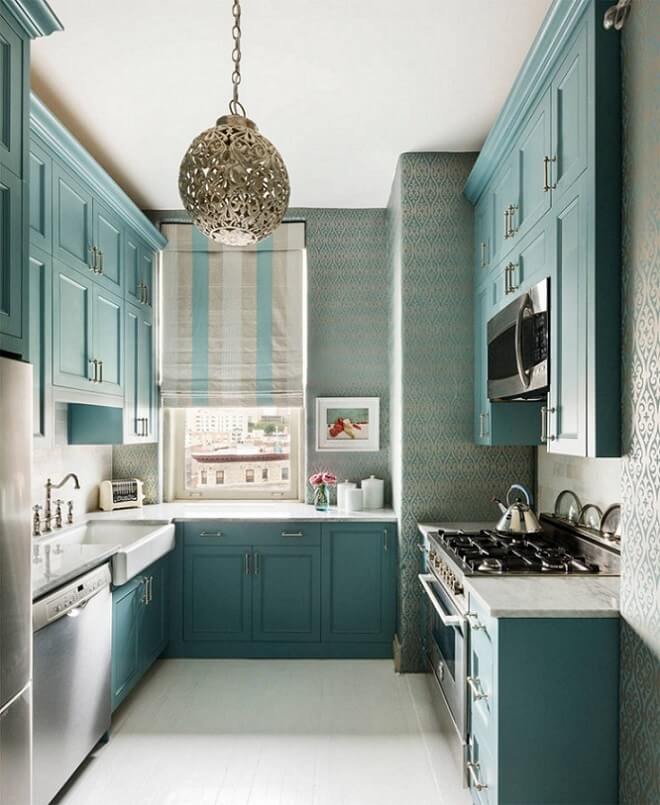
Depending on the layout you choose and how much room you have to work with, you also need to decide if your kitchen is going to have an island. A small kitchen with an island sounds like a crazy idea, but there are plenty of ways to incorporate one. If you plan to have a permanent, unmovable island, include that in your layout design. Otherwise, we’ll get into more small kitchen island ideas further down the page.
Design ideas
At this stage, put some thought into how you’ll decorate your kitchen. What colour will the walls be? What colour will the counters be? What will the floor look like? There are many things to consider, but getting it figured out at the early stages will make it easier when it comes time to choose counters, cabinets, and furniture.

Bright colours, particularly on the walls, are great in small kitchens; bright walls make the space feel open. The same can be said of light-coloured counters and cabinets. Of course, you don’t have to make everything bright. Accenting bright, colourful walls with dark countertops can look great. A dark wood floor with lighter, earthy tones on the walls can look nice as well. The colours and patterns you choose should reflect your personal tastes. We’ll dive into more specific cabinet, counter, and other design ideas as we go.
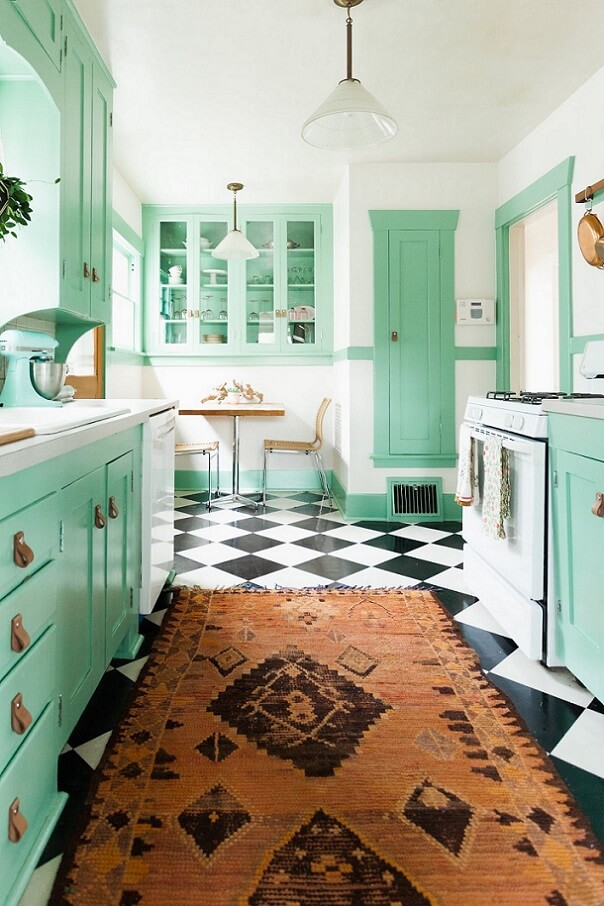
Stuff that stays put: decorating ideas for fixtures and furniture
Once you’ve settled on a layout (or if you aren’t building a new kitchen), it’s time for the bulk of the kitchen design work. Choosing the right cabinets, counters, lighting, and overall visual style of your small kitchen is what makes the difference between a cramped, gloomy space and a bright, functional kitchen.
Counter ideas
Assuming you’ve already got your layout planned, there are essentially two more things to consider when it comes to counters: what will they look like, and what will they be made of? Your counter’s design should complement the rest of your kitchen. A simple countertop of plain white or lightly-flecked stone is a good idea for small apartments, as the uniform space provides a nice visual break in a crowded space. Wood counters are always a great look. Light wood tones look traditional and rustic, while darker tones suggest elegance and refinement. If darkness is your thing, black countertops work well within a dark colour scheme, but they can also offset colourful cabinets or walls. Mid-tones, like grey or beige, are versatile and work with lots of different designs.
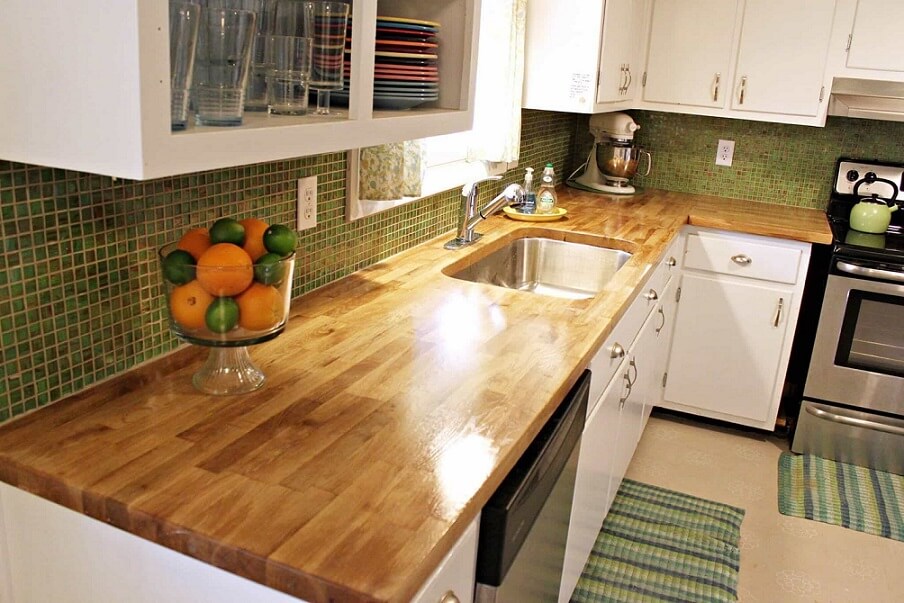
Of course, colour options will also depend on what kind of surface you choose for your counters. Laminate is a basic budget choice. It’s available in virtually any colour and design you choose but isn’t as durable as other options. Stone is always a great choice. Stone countertops are virtually indestructible and available in plenty of shades and patterns. Stone countertops are expensive, but that’s one of the great benefits of a small kitchen: you have less surface area to cover, so you can afford nicer materials!
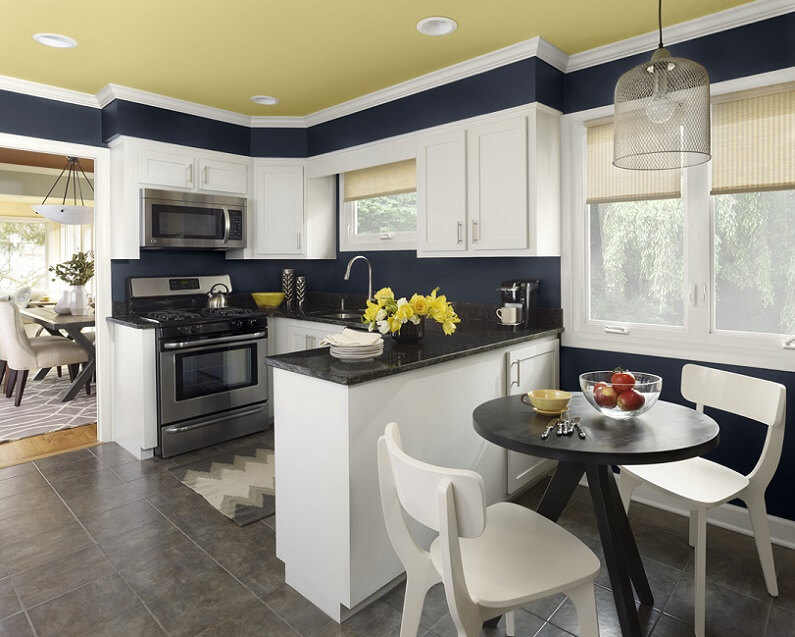
Wood, or butcher block, countertops are easy to fit into both traditional and modern designs. If you like the look of wood, but you’re not sure about all-wood countertops, consider stone countertops and a butcher block island for your kitchen.
Cabinet ideas
When it comes to cabinets, there’s one important rule to follow for small kitchens: maximize usage of space. When space is at a premium, wasting it is a crime. Don’t be afraid to choose cabinets that extend right to the ceiling (unless your ceiling is unusually high!). Where possible, fill empty spaces – even small ones – with usable cabinet space. For very small kitchens, especially galley kitchens, consider sliding cabinet doors instead of regular swinging doors. Drawers tend to be more efficient uses of space than cabinets, so consider adding extra drawers to your lower cabinet set.
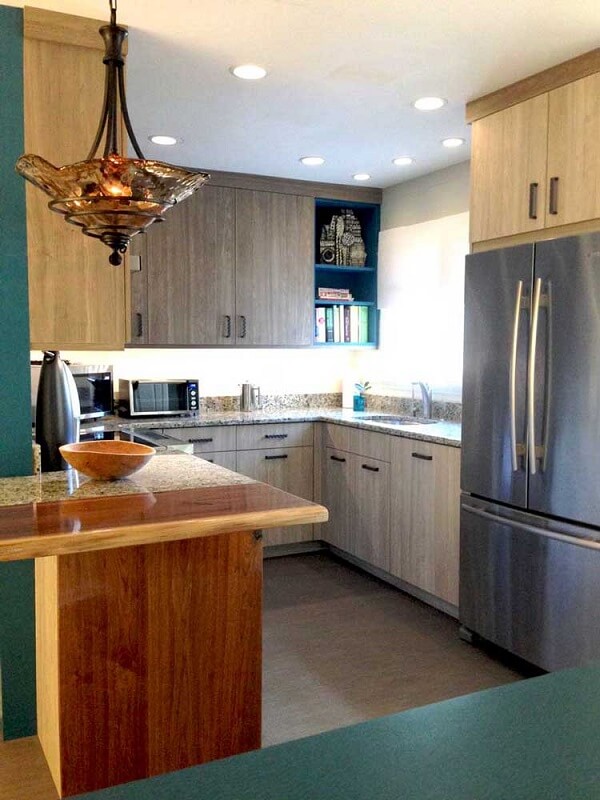
Source: giorgikitchens.com
The appearance of your cabinets is another decision to make. As with counters, choose a design that harmonizes with your overall plan for the kitchen. The first step is to choose a door profile. Slab doors are totally flat, while recessed or mitred profiles have three-dimensional patterns. Slab doors are great for a modern or minimalist kitchen theme, while other options can provide a more traditional feel.
With that in mind, the next consideration is colour. In small kitchens, brighter colours are always a good idea, as they make the space appear larger and more open. Dark cabinets surrounded by bright countertops and flooring can provide a beautiful contrast.

An unorthodox cabinet idea for small kitchens is to have no cabinets at all! Having open shelves makes the kitchen feel much more open. It also gives you more space to decorate; you can use some of your shelving for purely aesthetic purposes. The open-shelf approach is particularly effective in galley kitchens, which can feel a little claustrophobic with full cabinets on both sides.
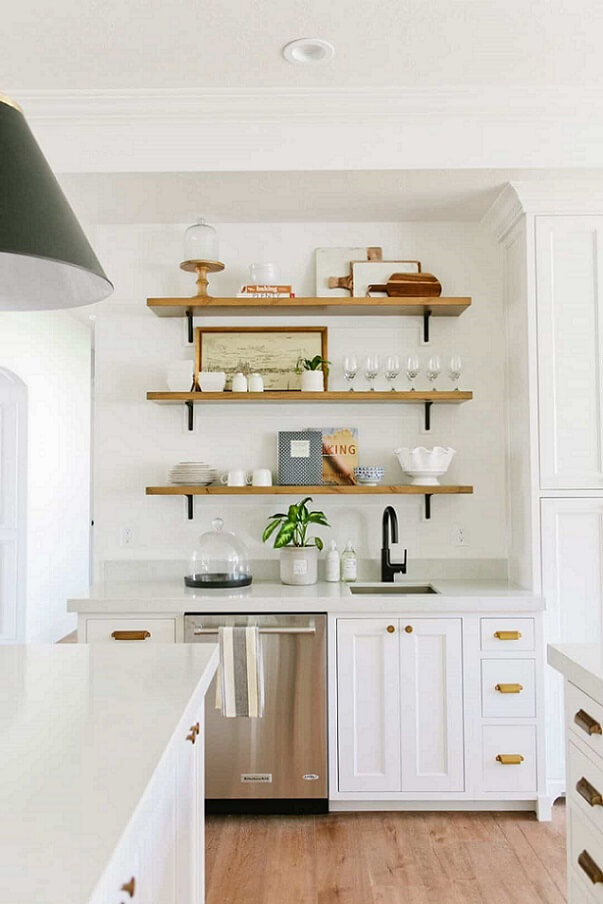
Island ideas
If you’ve got the room for it, an island is a great way to add some counter space to a small kitchen. You may think that your kitchen is too small for an island, but there are some creative ways to add the utility of an island to even the tiniest kitchens.
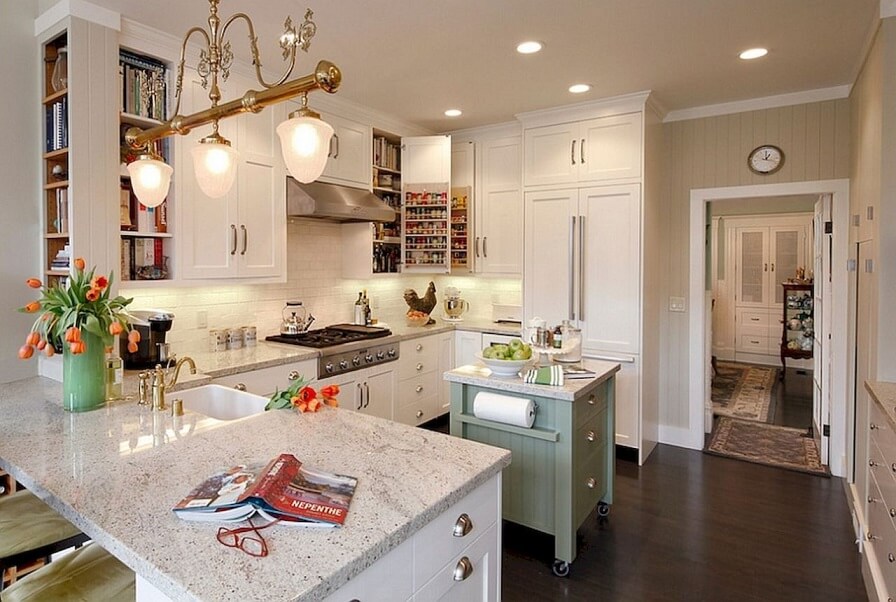
Islands can either match or contrast with the design of the rest of the kitchen. A butcher block top for the island is a good idea for almost any kitchen design. For a more industrial look, a stainless steel chef’s table can make a fine island, with the added bonus of being moveable. Moveable islands are great ideas for small kitchens, as they can be shifted out of the way when necessary. Kitchen carts fit that bill as well and can be found in very small sizes. If you have a galley kitchen, you may not have room for an island. You may, however, be able to squeeze in a narrow island depending on the width of your kitchen. Repurposed console tables make good narrow islands. The rule of thumb is to leave at least 1 metre of walking space between the island and the counters or walls.
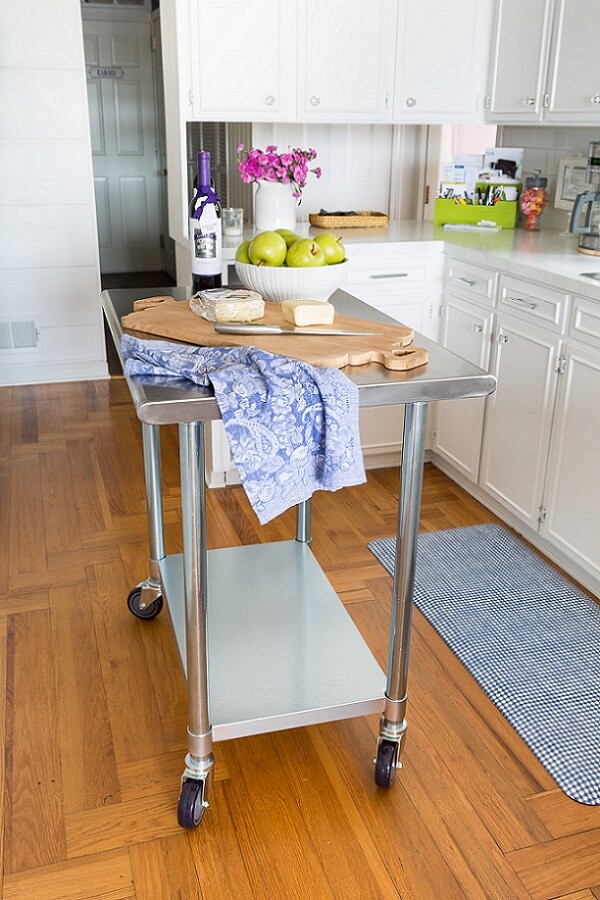
Whatever island you choose, remember to optimize the space usage. If you can, integrate storage space into the island in the form of shelves or cabinets. A pot hanging rack fitted to the ceiling above your island is a great way to store bulky pots and pans. It may not work with a minimalist design, but a hanging pot rack can look visually appealing, particularly if you have nice-looking pots and pans. If you want to go the extra mile, you could even buy a new, matching set of pots and pans that works with your motif. It’s a great excuse to buy a fancy new set of copper-clad pots and pans!
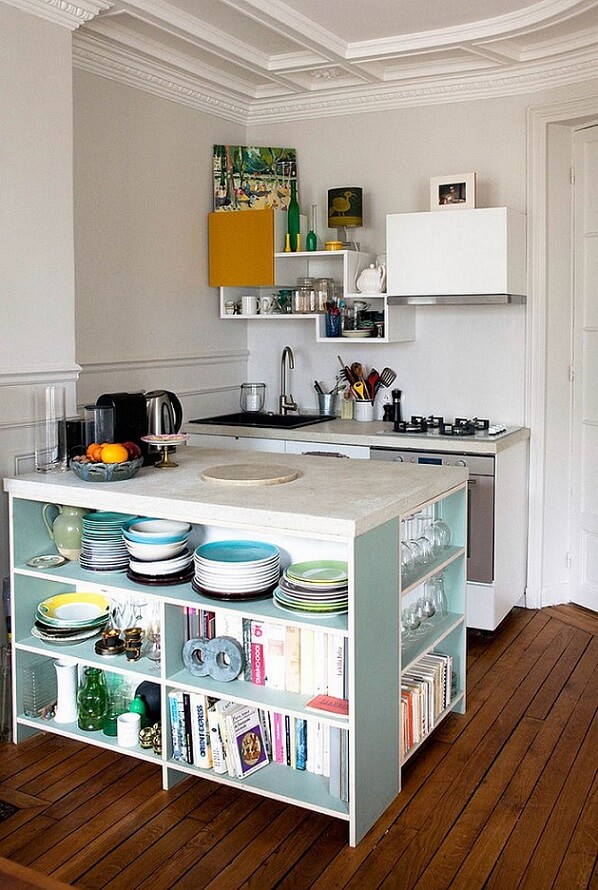
Lighting ideas
Often neglected, lighting is one of the most important elements of interior design, especially in kitchens. After all, it’s a room in which you work with knives and heat; you want to be able to see what you’re doing!

It’s always best to use natural light wherever you can, so hopefully your kitchen has a window or two to work with. But of course, you’ll often be cooking dinner while it’s dark outside, so getting your ambient and task lighting correct is important. Ambient lighting refers to the main source of light that blankets the room evenly. In a small kitchen, recessed lighting is a good choice, as it takes up no space. Depending on your ceiling height, you may have room for hanging lights. A hanging fixture above the island is a good idea if you’ve got the room for it.

Task lighting in the kitchen is very important. Under-cabinet lighting is an excellent way to illuminate your work surfaces while also adding a very attractive extra layer of light to your kitchen. Under-cabinet lighting should be a no-brainer for most small kitchens, as it doesn’t take up any precious space. Of course, under-cabinet lighting is sort of dependent on the presence of cabinets, so if you’ve opted for open shelving or you have an open wall above your work surface, hanging lights or even wall-mounted lights can also make for excellent task lighting.
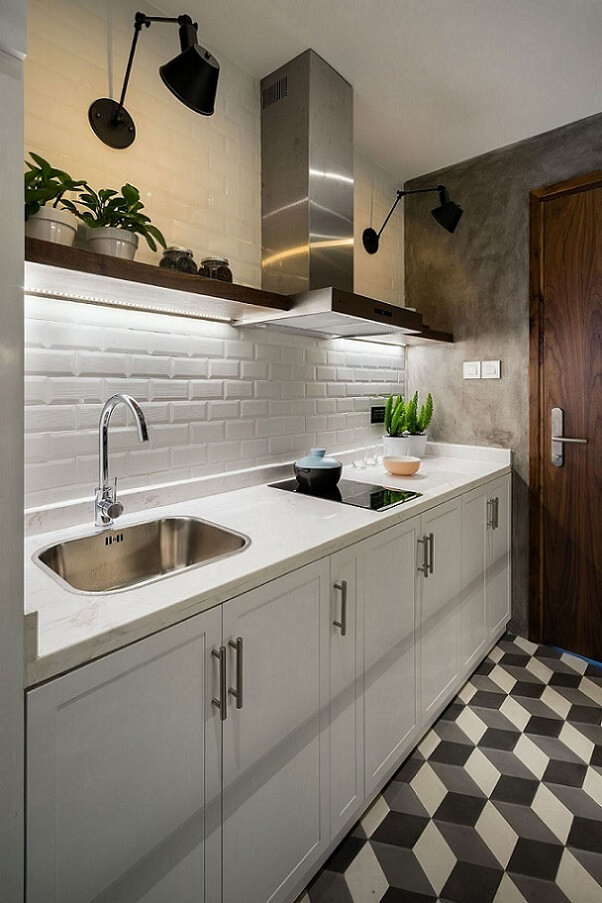
The final consideration when it comes to lighting is brightness. In a small home with a small kitchen, the room will often have to do double duty as both food prep and eating space. The bright lights needed for cooking may not provide the right mood for an intimate dinner setting. The solution is dimmable lighting throughout your small kitchen.
Table ideas
In a small home, there’s often no space for a dedicated dining room, so the already-small kitchen has to incorporate space for eating as well. Fortunately, there are plenty of ways to incorporate a table without taking up huge amounts of space.

If your kitchen can accommodate it, you can incorporate a banquette into an unused corner. This is a way to create a cozy nook for eating without hogging too much floor space. If your kitchen doesn’t afford you that kind of space, you may need to be a little more clever about fitting your table in. Drop-leaf tables are great for small kitchens since you can fold down the leaf when you’re not using the table to open up space. If you live alone or with just one person, you can also consider a small bistro-style table with a pair of chairs for a Parisian dining experience. If your kitchen is too small, even for a two-seat table, you can opt for a fold-out table. These tables fold up against the wall when not in use. If your kitchen has an island, you can integrate a seating area into it. Using stools or chairs that slide underneath the island means you can have a seating area that takes up no extra floor space.

